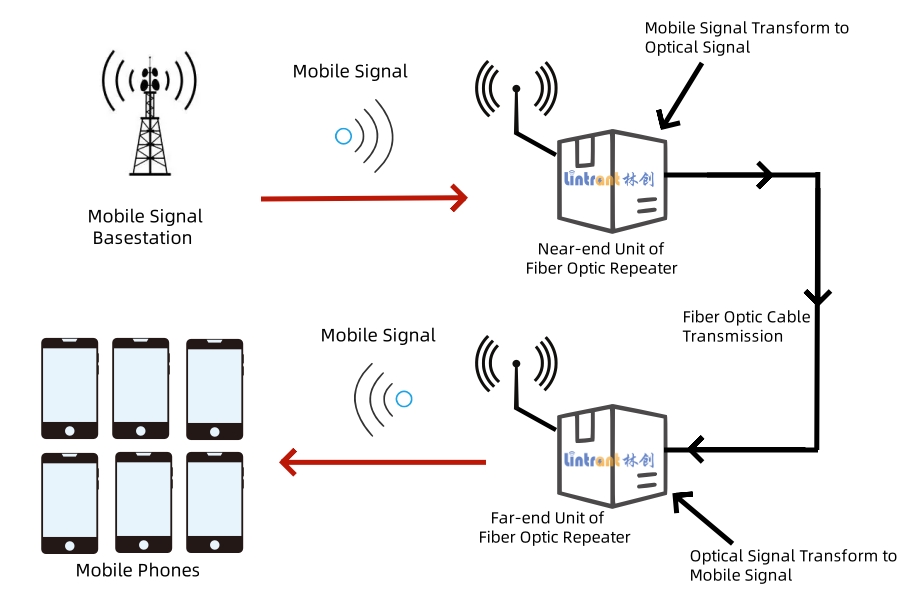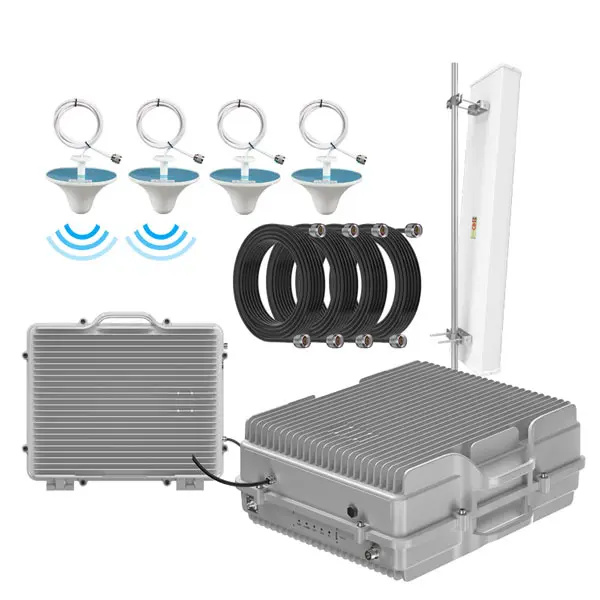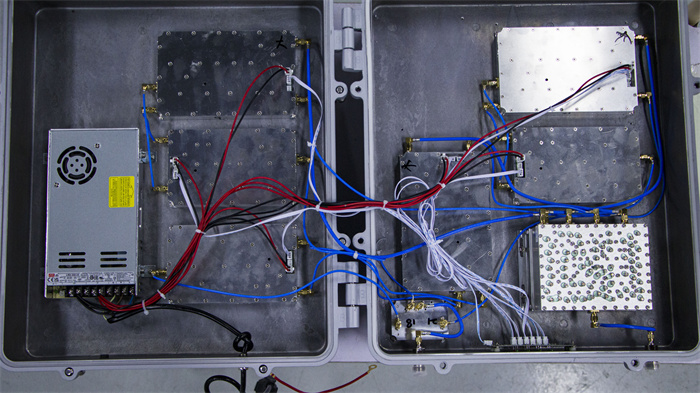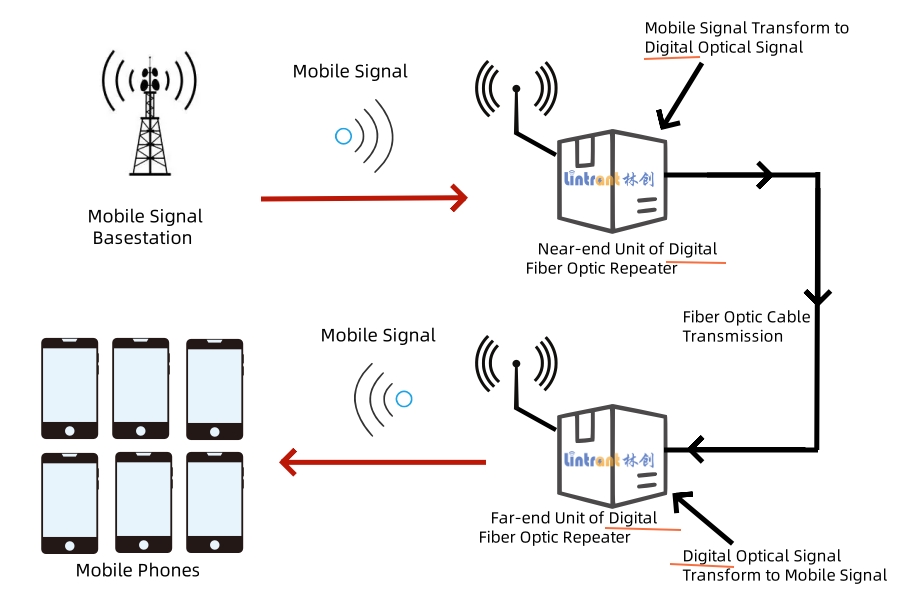1. What is a Traditional Fiber Optic Repeater?
Typically, when people refer to a fiber optic repeater in the industry, they are talking about an analog signal fiber optic repeater.
How do fiber optic repeaters work?
An analog fiber optic repeater converts mobile signals (RF analog signals) into optical signals for transmission via fiber optics, and then converts them back into RF signals at the far end. The principle is illustrated below.
Once the analog signal is converted into light, the quality of the optical signal becomes highly dependent on the fiber’s transmission characteristics, often resulting in signal distortion, noise, and other issues.
Working Principle of Fiber Optic Repeater
Moreover, traditional analog fiber optic repeaters generally struggle with gain control and noise suppression, making it difficult to achieve precise signal adjustments and optimizations.
For example, Lintratek’s analog fiber optic repeaters have a maximum transmission range of only 5km, and multi-band transmission is susceptible to interference. In scenarios with multiple frequency bands, if two bands have similar frequencies, signal interference and distortion can easily occur during transmission.
Lintratek Analog Fiber Optic Repeater and DAS
As a result, traditional analog fiber optic repeaters, which rely on analog signals, are no longer adequate for today’s large data communication demands, particularly for commercial users.
Internal Components Fiber Optic Repeater
2. What is a Digital Fiber Optic Repeater?
As the name suggests, a digital fiber optic repeater is an upgraded version of the traditional analog fiber optic repeater. The key upgrade is that it first converts mobile signals (RF analog signals) into digital signals before converting them into optical signals for transmission. At the far end, the signals are restored as digital signals and then converted back into mobile signals for delivery to users’ phones. The principle is illustrated below.
In essence, a digital fiber optic repeater adds an extra step of converting signals into digital form before transmission.
Working Principle of Digital Fiber Optic Repeater
In terms of signal quality, digital signal processing (DSP) technology effectively removes noise and interference during transmission, even in multi-band scenarios where frequency bands are close to each other, ensuring high-fidelity signal transmission and maintaining the stability and reliability of communication.
Additionally, digital fiber optic repeaters provide higher precision and flexibility in gain control and frequency selectivity. These repeaters can fine-tune and optimize signal quality based on the specific network environment and business requirements.
3. Traditional Fiber Optic Repeaters vs. Digital Fiber Optic Repeaters
|
Feature |
Traditional Fiber Optic Repeater |
Digital Fiber Optic Repeater |
| Signal Type | Converts analog signals to optical signals | Converts RF signals to digital signals, then to optical |
| Signal Quality | Prone to signal distortion and noise due to fiber transmission characteristics | Uses DSP to eliminate noise and interference, ensuring high-quality signal transmission |
| Gain Control | Weaker in gain control and noise suppression | Offers high precision and flexibility in gain control and frequency selection |
Lintratek’s digital fiber optic repeater is one of the company’s most significant product advancements. It supports transmission distances up to 8km, ensuring high-quality large data transmission to meet the demands of 4G and 5G data transfer.
Lintratek Digital Fiber Optic Repeater
4. Frequently Asked Questions:
Q1: Can existing analog fiber optic repeaters be upgraded to digital fiber optic repeaters?
A:
-You can retain the existing fiber optics and antennas, only replacing the core relay modules.
-A digital signal processing (DSP) unit will be added to ensure compatibility with the original RF interfaces.
-The upgrade cost can be reduced by 40%-60%, maximizing your investment protection.
1.If the original network design uses a star connection, simply replacing the analog fiber optic repeater with a digital unit and upgrading specific frequency antennas will suffice.
2.For other network configurations, some fiber optic cable modifications may be necessary. If you’re interested in upgrading to a digital fiber optic repeater, feel free to contact us. Our communication engineers will provide you with an optimal solution.
Q2: Does the digital repeater require cooperation from mobile network operators?
A: No, it’s completely self-deployed. It directly amplifies the existing mobile signal without requiring operator authorization or parameter changes.
Q3: Can analog and digital devices be mixed in the same network?
A: Yes! We offer hybrid relay solutions:
-In areas with strong signals (like hotel lobbies), analog devices can remain in use.
-In weak signal or critical 5G zones (like conference rooms and underground parking lots), digital devices are deployed.
-The entire system can be monitored and optimized via a unified network management platform.
Post time: Feb-19-2025












